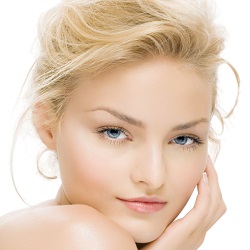Lower Blepharoplasty Evens Out Bulging Lower Eyelids

The look of the lower eyelids has a significant impact on a person’s appearance. The lower eyelids are some of the earliest areas of the face to show the signs of aging. This is because eyelid skin is extremely delicate and thus susceptible to damage caused by overexposure to UV rays.
Additionally, with time, fat starts accumulating around the lower eyelids, making a person look older and fatigued. To address these problems and restore the natural look of the lower eyelids, Dr. Chegar performs lower blepharoplasty.
Lower Blepharoplasty: No More Sleepy Eyes
Lower blepharoplasty is a surgical procedure that is performed to address a number of imperfections impacting the lower eyelids, including undereye bags, drooping lower eyelids, and wrinkles. The process involves repositioning excess fat to address fat bulges, removing excess skin to address sagging and eyelid wrinkles, and addressing sagging muscles.
The Surgical Process
To help patients avoid discomfort, Dr. Chegar uses local anesthesia to numb the treatment area, along with sedation. Once the aesthesia starts taking its effect, Dr. Chegar creates an incision just below the lash line. Through this incision, he removes and repositions excess skin and fat.
Another option may be an incision on the inside of the lid. This option is ideal for specifically focusing on alteration of excess fat and also avoids any post-surgical marks.
In patients with weaker eyelids, a canthoplasty or canthopexy may be performed in conjunction with lower blepharoplasty. These two procedures involve reconstructing the tendons, which helps with drooping eyelids. Many patients may also be recommended to opt for complementary skin-resurfacing procedures.
After the area is recontoured, Dr. Chegar closes the incision with tiny stitches. The entire process takes anywhere from 45 to 60 minutes.
Ideal Candidates for Lower Blepharoplasty
An ideal candidate for lower blepharoplasty is someone who:
- Does not have drug or latex allergies
- Does not experience dry eye symptoms
- Does not smoke or is ready to quit smoking
- Is not satisfied with appearance of their lower eyelids
Preparation for Lower Blepharoplasty
- Talk to Dr. Chegar about any facial, ophthalmic, and eyelid procedures that you have opted for in the past.
- Inform Dr. Chegar about ophthalmic medications and lubricants (if any) that you use.
- Stop smoking several weeks before the procedure.
- Stop taking warfarin, aspirin, over-the-counter medications such as naproxen, and herbal supplements at least a couple of weeks before surgery.
- Arrange for a friend or family member to drive you home after the procedure.
Post-Operative Care Instructions
- Apply ice packs continuously to the treated area for at least 48 hours after surgery.
- Apply ointment or drops provided by Dr. Chegar regularly for at least one week after the procedure.
- Avoid strenuous activities for at least a couple of weeks after surgery.
- Avoid using contact lenses and eyelid makeup for at least a couple of weeks after the procedure.
- Avoid smoking and drinking for at least a couple of weeks after surgery.
The Results of Lower Blepharoplasty
Lower blepharoplasty delivers sustainable results. Though the lower eyelids will still sag with time, having a lower blepharoplasty slows down the process a great deal. The effectiveness of the procedure can be gauged from the fact that most patients do not seek a repeat procedure afterwards.
Make the Right Choice for You
Is lower blepharoplasty right for you? The best way to find out is by contacting the office of Dr. Burke Chegar, who is double-board-certified in Facial Plastic and Reconstructive Surgery and Otolaryngology. Schedule your consultation today.
